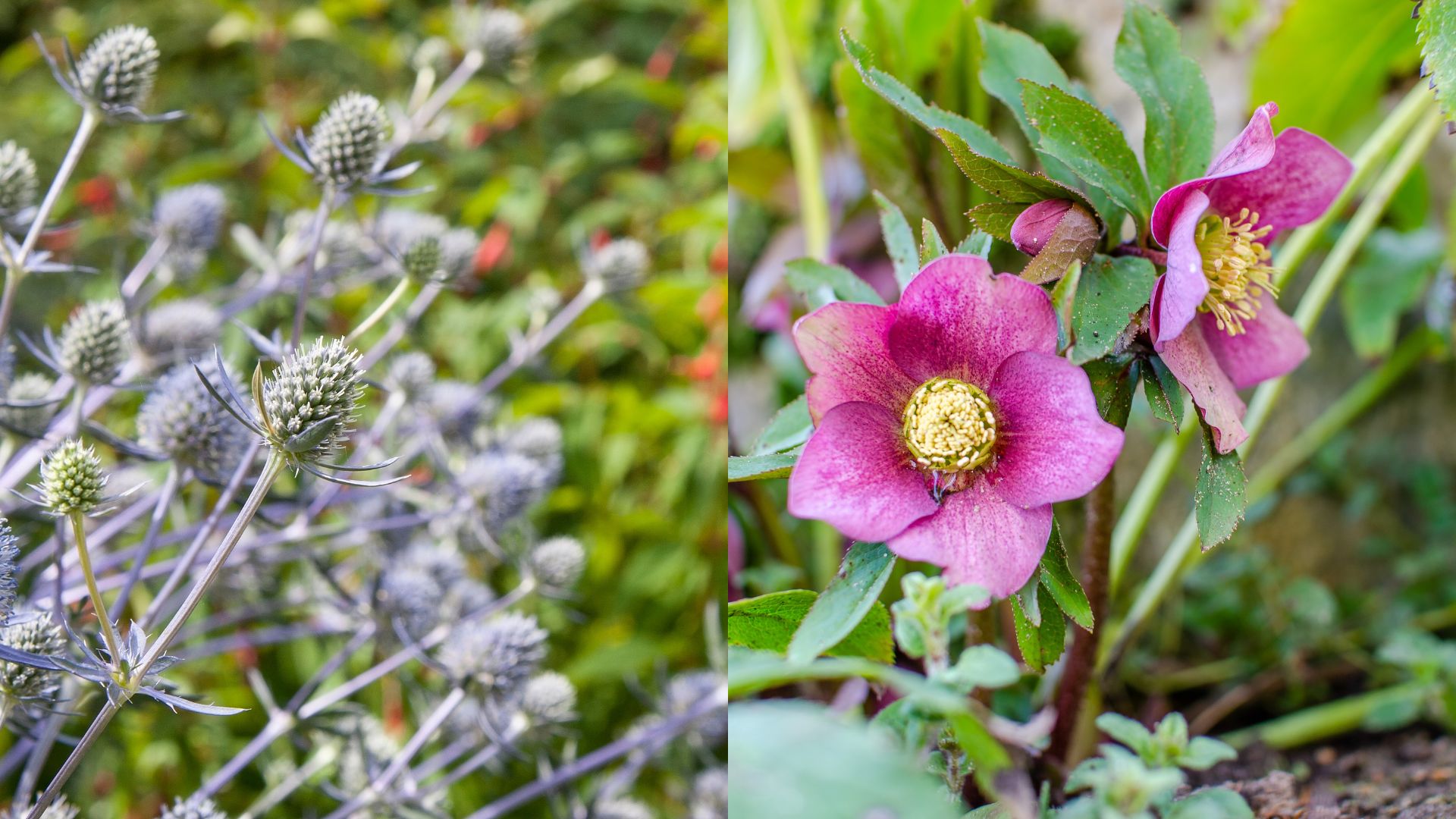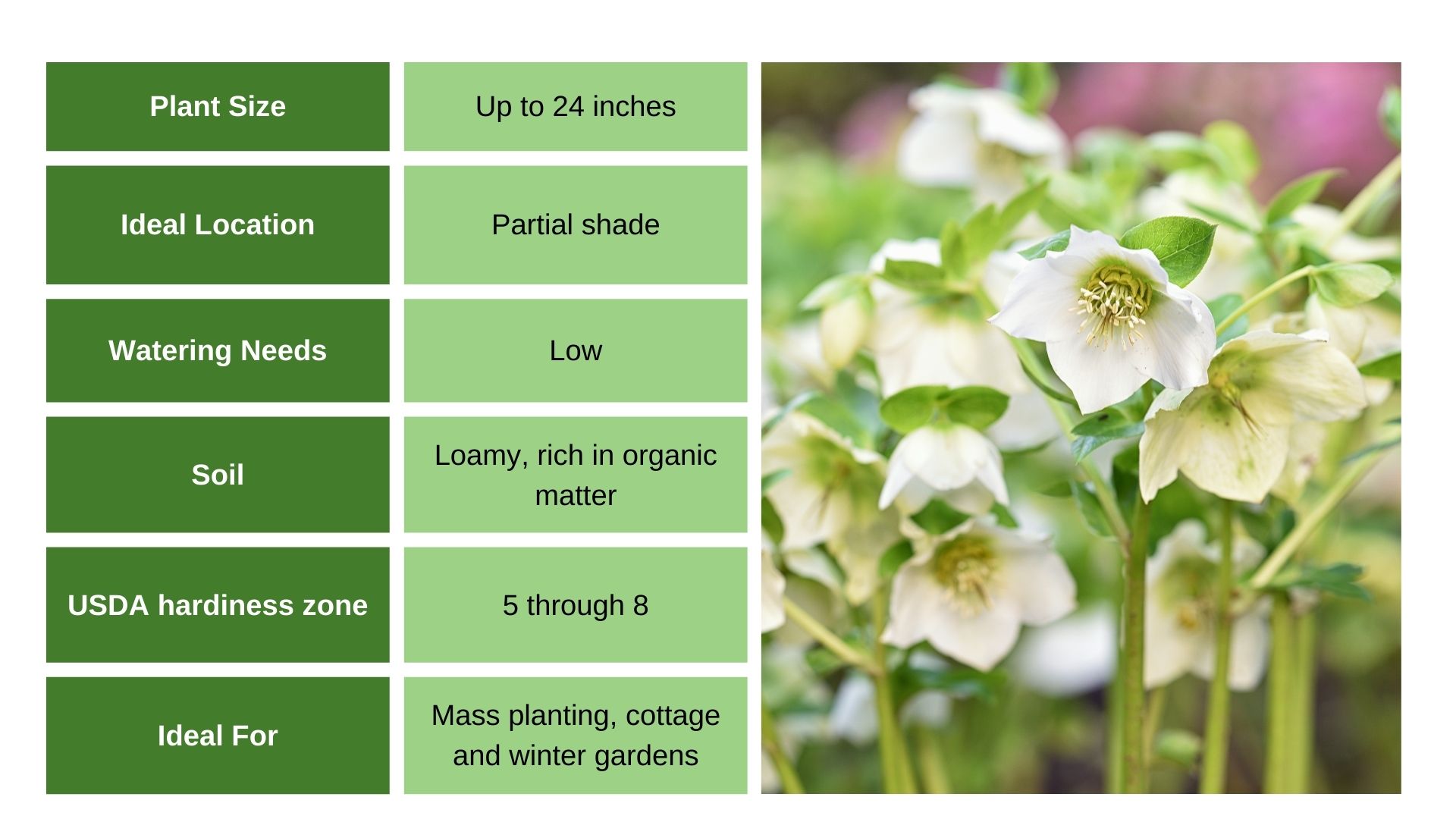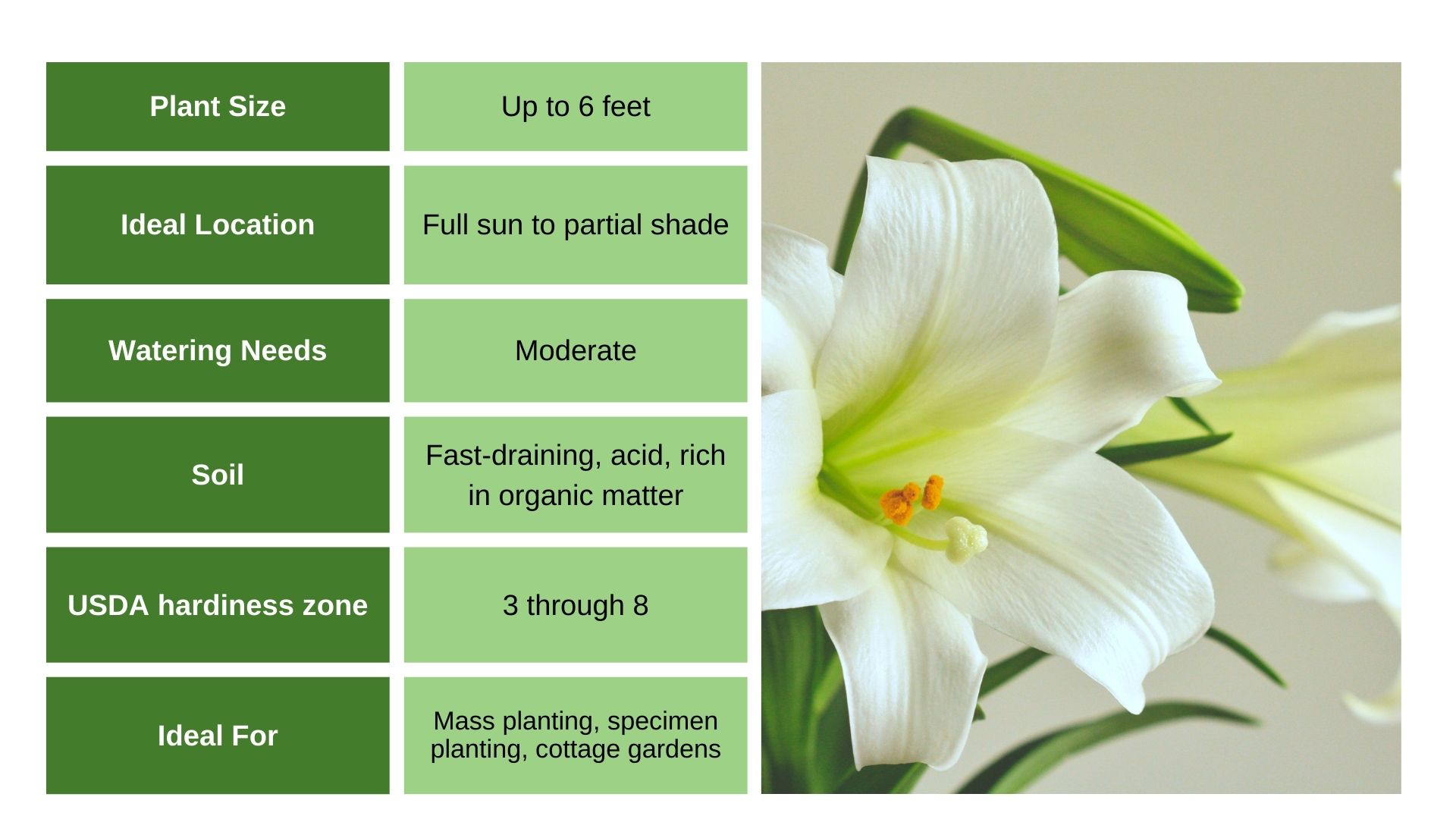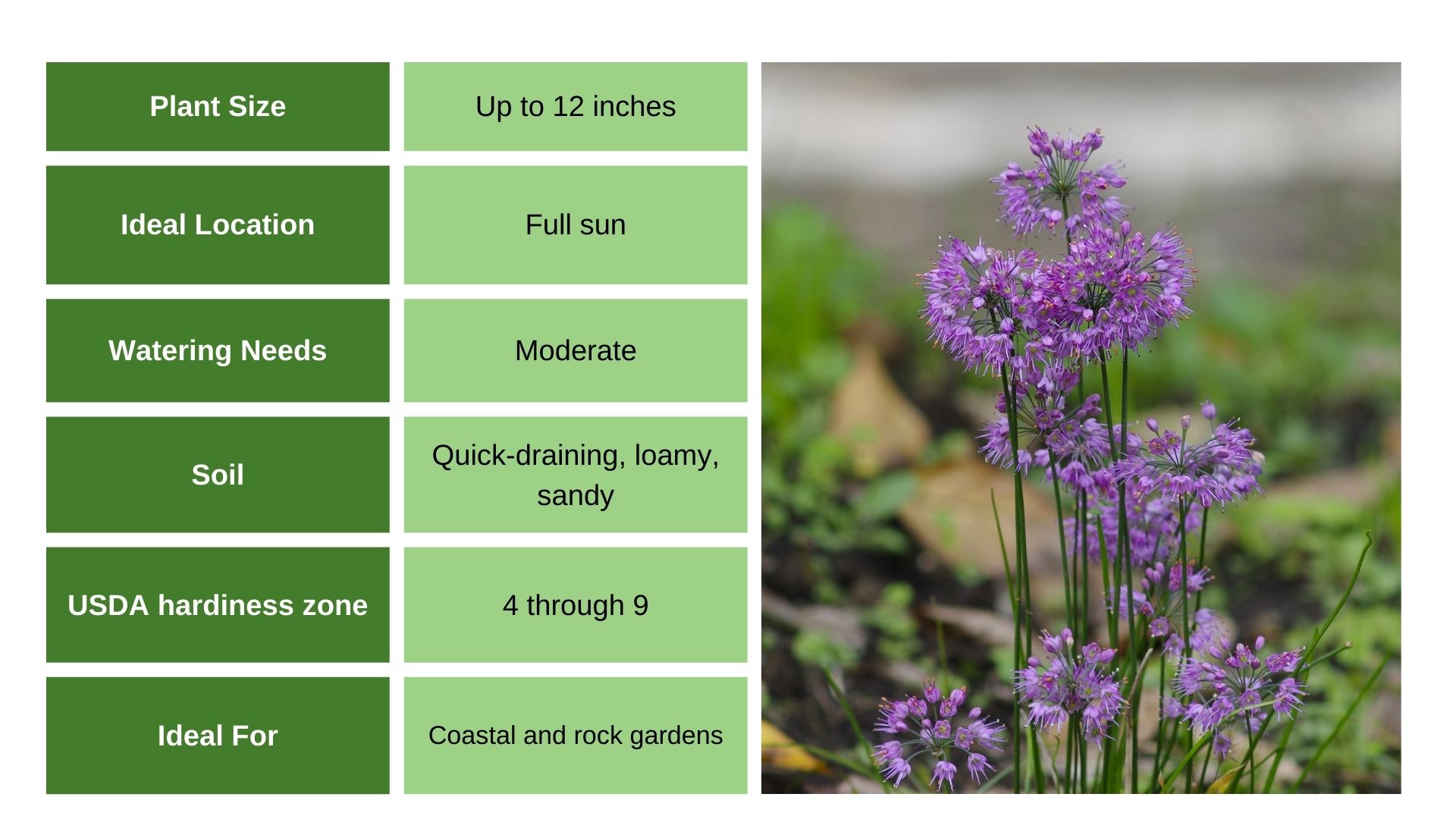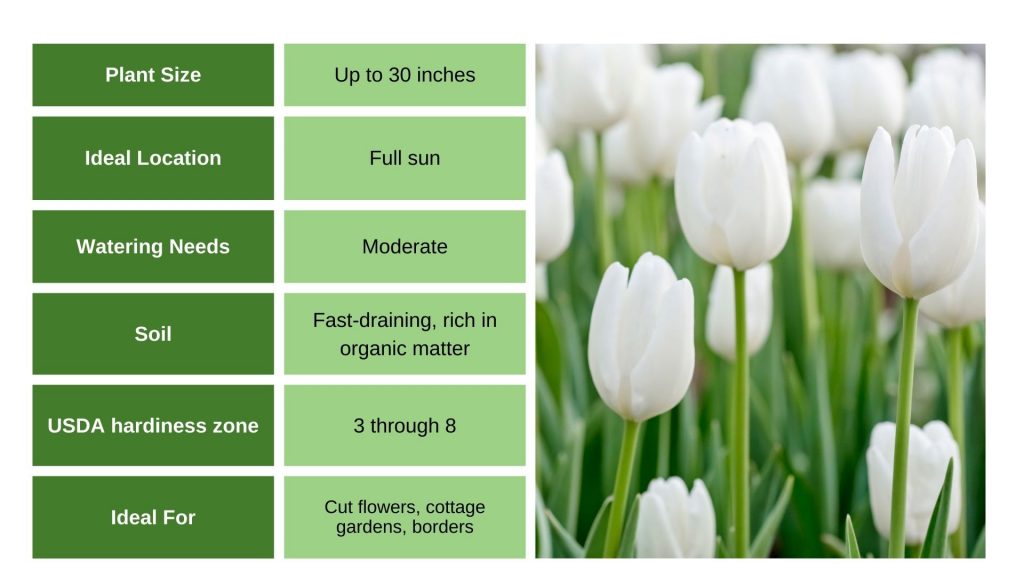There aren’t many gardening tasks to complete in November but this is a great time to plan next season’s garden. Some plants that produce blossoms during the warmer months may need a chilling period after you sow the seeds.
And guess what, if you start them in your outdoor garden in late fall, they’ll establish well until the temperatures rise again.
Selecting the plants should always include checking their hardiness zones, so if you live in harsh climates, you can start the seeds in containers outdoors.
In this article, I’ll show you some breathtaking flowers to plant in November, their features, and the planting and growing process.
Let’s get started!
1. Sea Holly
If you want flowers in your bed from June through September, Sea holly is the perfect choice. This prolific bloomer generates splendid spiky silverish-blue flowers.
The main benefit of planting Sea holly in November is that the plant will develop clumps and have a robust root system when the flowering season begins.
The seeds of this lovely plant must go through the chilling process for successful germination. You should sow the Sea holly seeds in free-draining soil because the plant doesn’t tolerate wet growing medium.
This plant does best when started directly in the ground in USDA zones 5 through 9. This drought-tolerant perennial isn’t finicky about growing conditions and as long as you plant it in sandy soil and give it enough light, it will reward you with an abundance of blooms.
It is possible to start the seeds of these species indoors, but you’ll need to ensure the chilling period. You can put the seeds in a refrigerator and keep them there for approximately a month.
Then, sow them in smaller pots filled with quick-draining potting mix and replant them in your outdoor garden when the spring arrives.
2. Hellebores
Many growers put their garden beds to sleep during the winter. The main reason for this is that there aren’t really many flowering plants that bloom during the colder months.
But if you want to start a winter garden, then you should plant Hellebore. It’s one of the plants that will keep your garden vibrant during the winter.
The blossoms are cup-shaped and come in various hues, and they combine perfectly with glossy green foliage. They’ll definitely add an elegant touch to your garden and they’re super easy to maintain, so they’re suitable for beginner gardeners.
If you live in warmer climates, some varieties such as Christmas rose and Lenten rose can produce blossoms in December. Those who live in colder regions can expect the blooms as soon as the spring arrives.
Hellebore species thrive in well-draining alkaline growing mediums rich in organic matter. Hellebores are shade-loving perennials and won’t tolerate any exposure to full sun.
I have to mention that too low temperatures can damage foliage and some Hellebore varieties are very sensitive to frost, so it would be best to plant and keep them in containers.
This gardening method allows you to move your plants in order to protect them from damage caused by harsh weather.
These plants can self-seed, which makes them perfect for mass planting; you get a lot of plants for free!
3. Lilies
Summer gardens are incomplete if there aren’t any lilies growing in the flower beds. Sowing lily seeds in November will give the plants enough time to establish and produce blooms the next season.
You can choose from numerous varieties; they come in different shapes and sizes so there’s at least one lily for every garden. Trumpet lilies are definitely one of my favorites.
In addition to striking blossoms, your garden will be filled with the enchanting and recognizable lily fragrance.
One of the things I especially like about these captivating flowering plants is that they grow well in containers. This allows us to move them if conditions aren’t favorable, but we also get an opportunity to put them in various spaces, such as balconies.
If you live in southern climates, you can keep these plants outdoors to overwinter. On the other hand, you should protect them from frost if you live in harsh climates.
But remember that these plants must experience colder temperatures in order to produce numerous blossoms. You should never transfer your lilies indoors for overwintering.
If you’re planting any of these species directly in the ground, make sure to complete the task before the first frost. They’ll develop robust roots that can survive freezing temperatures.
4. Allium Thunbergii
Plants from the Allium genus typically bloom during the spring and summer months. But Allium thunbergii generates buds in September and displays blossoms when October arrives. So, you’ll get a lovely flower display when your other Alliums finish blooming.
Another thing that makes this Allium special is that it forms into clumps and won’t spread like the other species. Fall planting is perfect for these plants and they’ll develop blossoms the next season.
Your garden will be filled with spectacular light pinkish-purple blooms that develop into globular clusters. The plant is also adorned with unique grass-like foliage.
The growth habit of Allium thunbergii allows you to cultivate it in containers. You need to put the plants where they can receive full sun and that’s essential if you want to see the blooms.
This is a low-maintenance long-blooming perennial and is perfect for novice gardeners.
5. Tulips
The perfect time to plant tulips is in the fall, i.e., November, because these plants are sensitive to high temperatures. Fall planting will help you avoid diseases in your tulips caused by high soil temperatures.
If your region doesn’t experience frost in early December, you can still plant the bulbs and have great results.
Tulips are indeed one of the prettiest flowers and each variety has something different to offer. You can choose between bicolor, long-stemmed, or some unusual varieties, such as the Ice Cream tulip.
It’s essential to plant bulbs in soil with good drainage because they’re susceptible to rotting. Additionally, you need to ensure a lot of full sun if you want your garden to be filled with magnificent tulip blooms.
Tulips do well in containers, so you don’t have to give up on growing these beauties if you don’t have a large garden.
Don’t spend November remembering the beauty of your summer garden. Grab your gardening gloves and plant at least one of these flowering species to have an amazing and colorful display for the next season!

